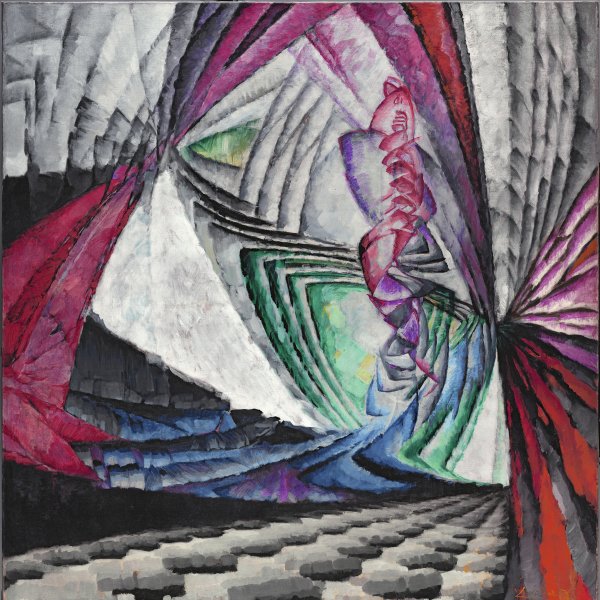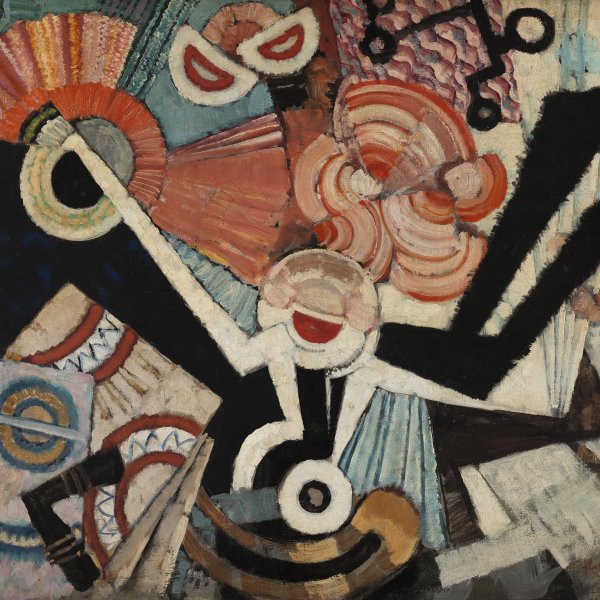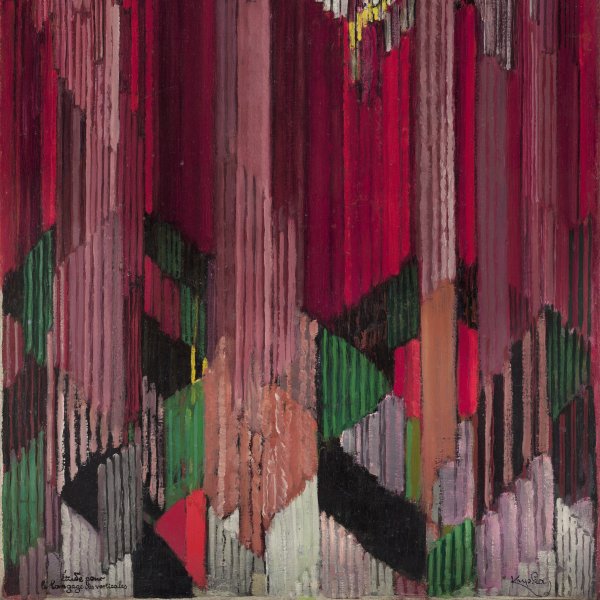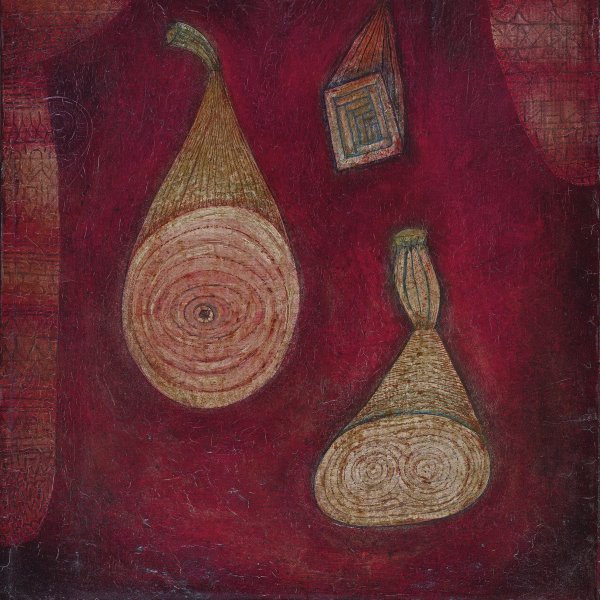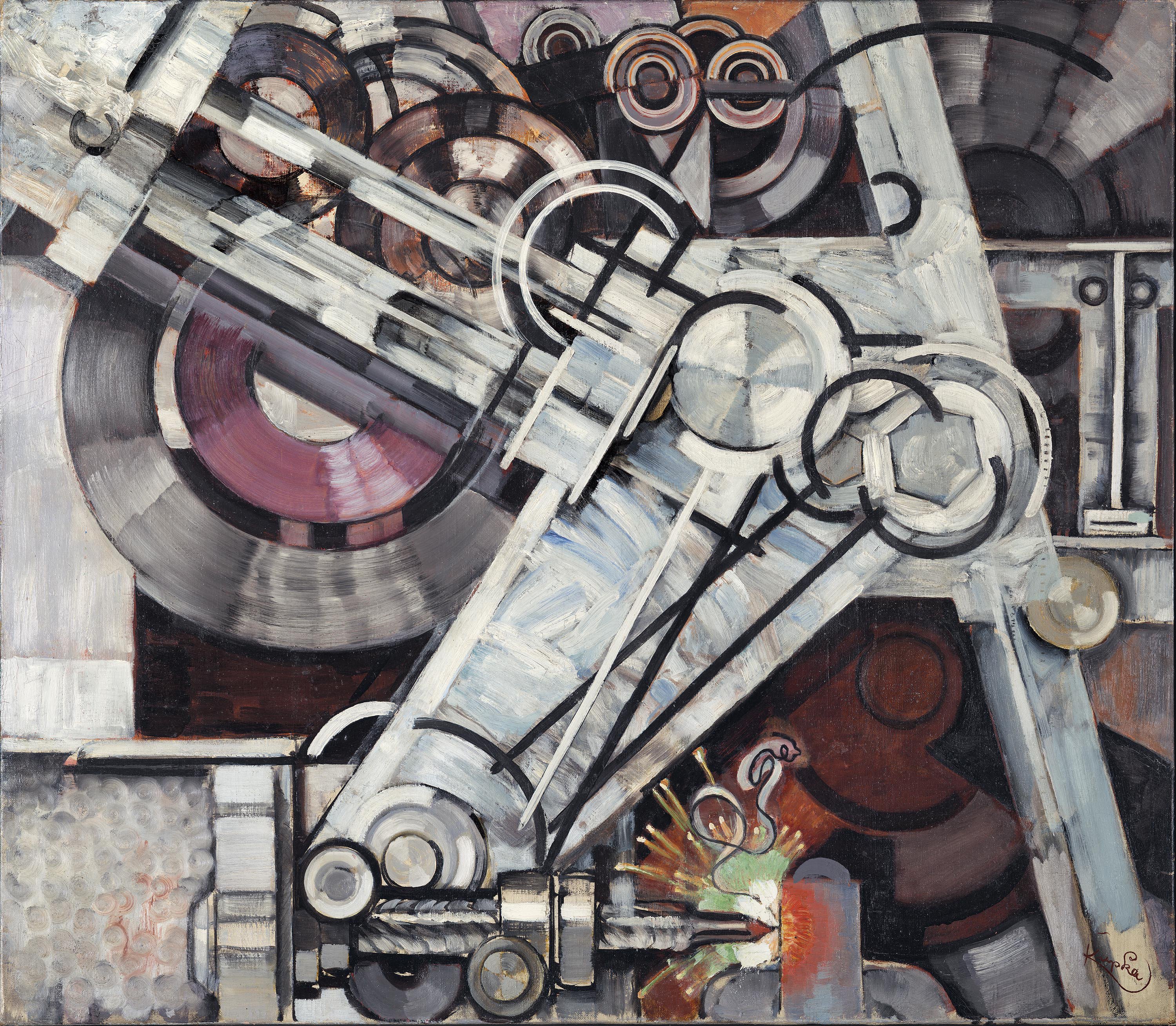The Machine Drill
ca. 1927 - 1929
Oil on canvas.
73 x 85 cm
Museo Nacional Thyssen-Bornemisza, Madrid
Inv. no.
633
(1978.73
)
Room 42
Level 1
Permanent Collection
At the end of the 1920s František Kupka decided to abandon the pure abstraction of the previous years and embarked on a series of experimental paintings based on machines, to which The Machine
Drill in the Thyssen-Bornemisza collection belongs. As Ludmila Vachtová argues, this transformation merely marked a break in his abstraction, for the artist was soon assailed by serious doubts owing to these works’ excessive dependence on firsthand observation of machinery. He did not even wish to include them in his retrospective exhibitions held in Paris in 1936 and 1946. “I don’t know if my returning to content is a good thing, ” he wrote to his patron Jindrich Waldes, explaining “I hope it is clear that the painting comes first, not the idea.” Nevertheless, this rhythmic abstraction of mechanistic forms of pistons and wheels is a foretaste of the abstraction of the Jazz-hot series Kupka produced in the mid 1930s.
Kupka never sold The Machine Drill, which remained in his studio until his death. Like the rest of the paintings in this cycle, it was not publicly shown before the painter died in 1957 and is therefore difficult to date. Although Vachtová ascribed it to about 1922–24, Christopher Green is inclined to date it to between 1927 and 1929, on account of its similarities to L’Acier boit No. II, executed during those years.
Paloma Alarcó
Kupka never sold The Machine Drill, which remained in his studio until his death. Like the rest of the paintings in this cycle, it was not publicly shown before the painter died in 1957 and is therefore difficult to date. Although Vachtová ascribed it to about 1922–24, Christopher Green is inclined to date it to between 1927 and 1929, on account of its similarities to L’Acier boit No. II, executed during those years.
Paloma Alarcó





